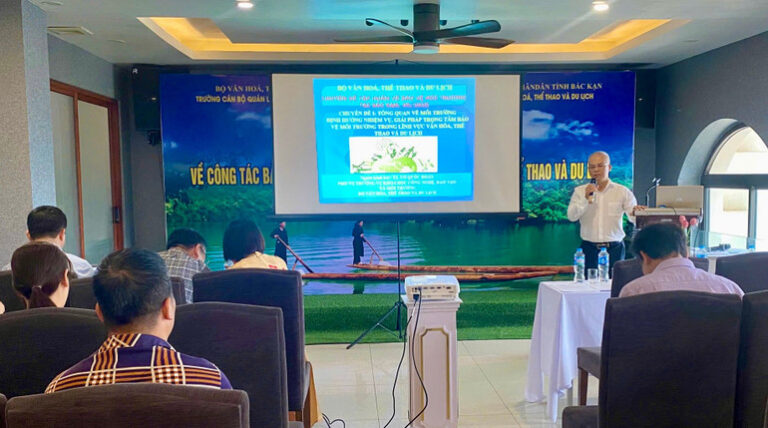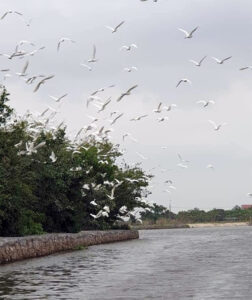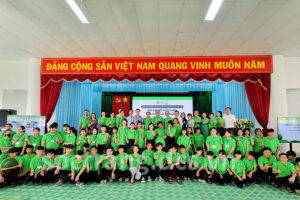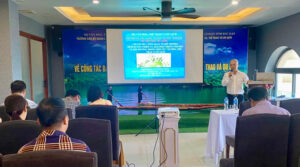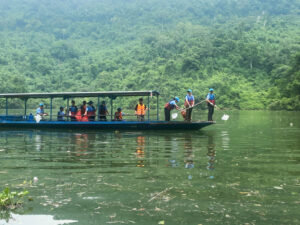From the primitive age, Tay Bac has (northwestern area) been endowed with innumerable marvels by nature. Although many things have been discovered, this area still contains a lot of mysteries.
From the primitive age, Tay Bac has been endowed with innumerable marvels by nature. Although many things have been discovered, this area still contains a lot of mysteries.
Going from Hanoi to Tay Bac (the northwestern area of Vietnam), visitors can follow Road 6 to Hoa Binh, Son La, Lai Chau and Dien Bien, and then turn to Lao Cai and Yen Bai by taking Road 3, which also leads to the starting point.
The gates to Tay Bac are Hoa Binh and Yen Bai where the mountains, hills and primal forests prevail. Ranges of high mountains stretch to the central region of the country and connect with the Truong Son Range which runs to the western area of the South. The mountains in Tay Bac are very high, seeming to touch the sky. The highest peak in Hoang Lien Range is Phan Xi Pang, 3,143m in height, which is dubbed as the roof of Indochina. High mountains create passes, which are tens of meters long, such as the Pha Din, Lung Lo, O Qui Ho and Moc Chau. It is very interesting to climb exhaustedly up a pass and enjoy a feeling of refreshment when standing on the top of a mountain, seeming to float on a sea of clouds like a fairy.
And the mountains, both primal and regenerated, stretch out of vision. The forests in Tay Bac deserve a saying “Golden forest” as they possess precious trees, such as iron wood and sen (Madhuca) which are as hard as steel, thong (Pimus) and aromatic po mu (Fokienia) trees. In addition, there are also forests of bamboo trees. The forests in Tay Bac are home to many precious animals, such as bears, tigers, stags and deer. According to a recent survey, the Hoang Lien Range has 16 species of animals, which have been listed in the world’s Red Book of Endangered Animals that need to be protected.
Mingling with the mountains and forests are vast rice fields, such as the Muong Thanh and Quang Huy or large tea hills in Nghia Lo and Yen Bai and pastures in Moc Chau.
Geographer Le Ba Thao said: “It is impossible to say that we have discovered all the richness of Tay Bac, endowed by nature. The beauty of this land has not been fully discovered”.
The typical beautiful scene of a mountainous area prevails everywhere in Tay Bac. The hamlet of H’mong ethnic people lies on a high mountain while the Dao people make their houses halfway up the mountain. The houses of the Thai, Muong and Nung people are usually located by the streams, rice and maze fields at the foot of the mountain. Although there are motor-boats running on the Da and Red Rivers, visitors still see young Thai and Muong girls in indigo long dress rowing the dug-out canoes which have existed since humans learned to farm and hunt.
It is very delightful to visit Tay Bac in spring. In this season, the area seems to be covered with the white colour of ban (bauhinia) flowers, which grow everywhere, from the high mountains and forests to the deep valleys. Their petals are immaculate white and fragile and have a light fragrance. H’mong people, a populous ethnic group in Tay Bac considers the ban flowers as the flower of old people because when looking at these flowers, old people seem to return to their youth, when they were young girls in white skirt to go to festivals or to the markets with their boy friends.
In summer, visitors should go to Sa Pa, an ideal place for rest. Due to lying at an altitude of 1,600m, Sa Pa has cool weather. It has a rich floristic composition with many kinds of flowers and fruits, primal forests and forests of apricot and bamboo trees. Sa Pa boasts majestic landscapes, such as the Bac (Silk) Waterfall, May (Cloud) Bridge and a thousand-year-old stone ground where still remain carved signs and symbols which are believed to be messages of ancient people sent to their descendents. Therefore, archaeologists have been trying to decode them to understand the people and nature from the ancient time. In the early 20th century, the French built Sa Pa into a tourist site and until now it remains a well known tourist center.
Visitors should not fail to go to Bac Ha to visit a love market held every weekend night. There, they will enjoy the romantic, lyric atmosphere of a love market of young ethnic men and women. They can also visit the hamlets of the H’mong and Thai people where they will meet young women who are gentle and elegant, excellent in playing gongs and dancing and skilled in farming and weaving.
The Thai, H’mong, Dao, Tay and Muong ethnic groups have been owners of Tay Bac for thousands of years . Besides their own characteristics, they have common particularities, i.e., industriousness and creativeness. Each ethnic group has its own cultural treasure with unique songs, dances, legends, poetic stories and epics. For example, the Thai has a love story “Seeing off the sweet-heart” which comprises thousands of verses while the Muong has a legend-chronicle which comprises more than 20,000 verses about the heaven and earth since the creation of the world.



